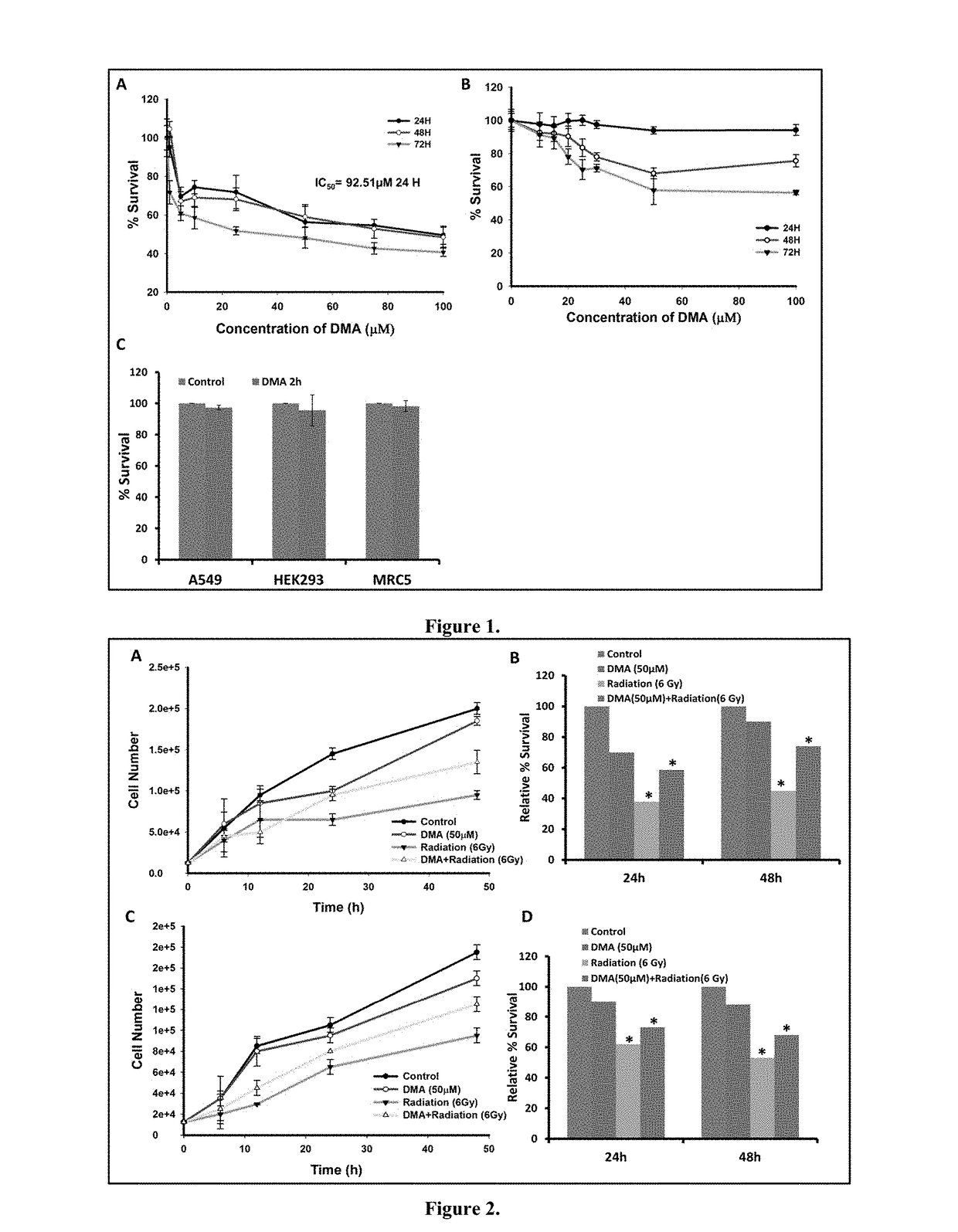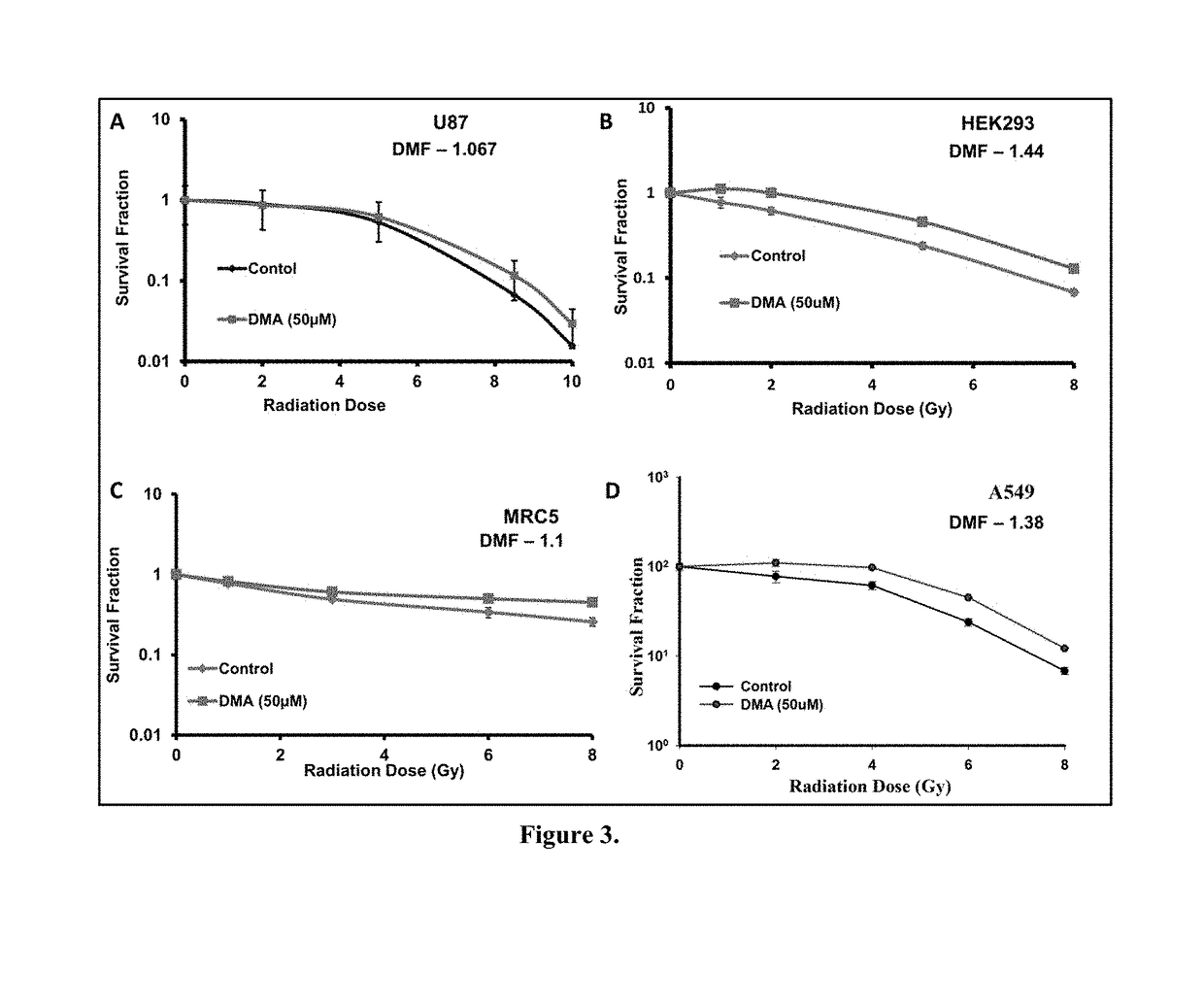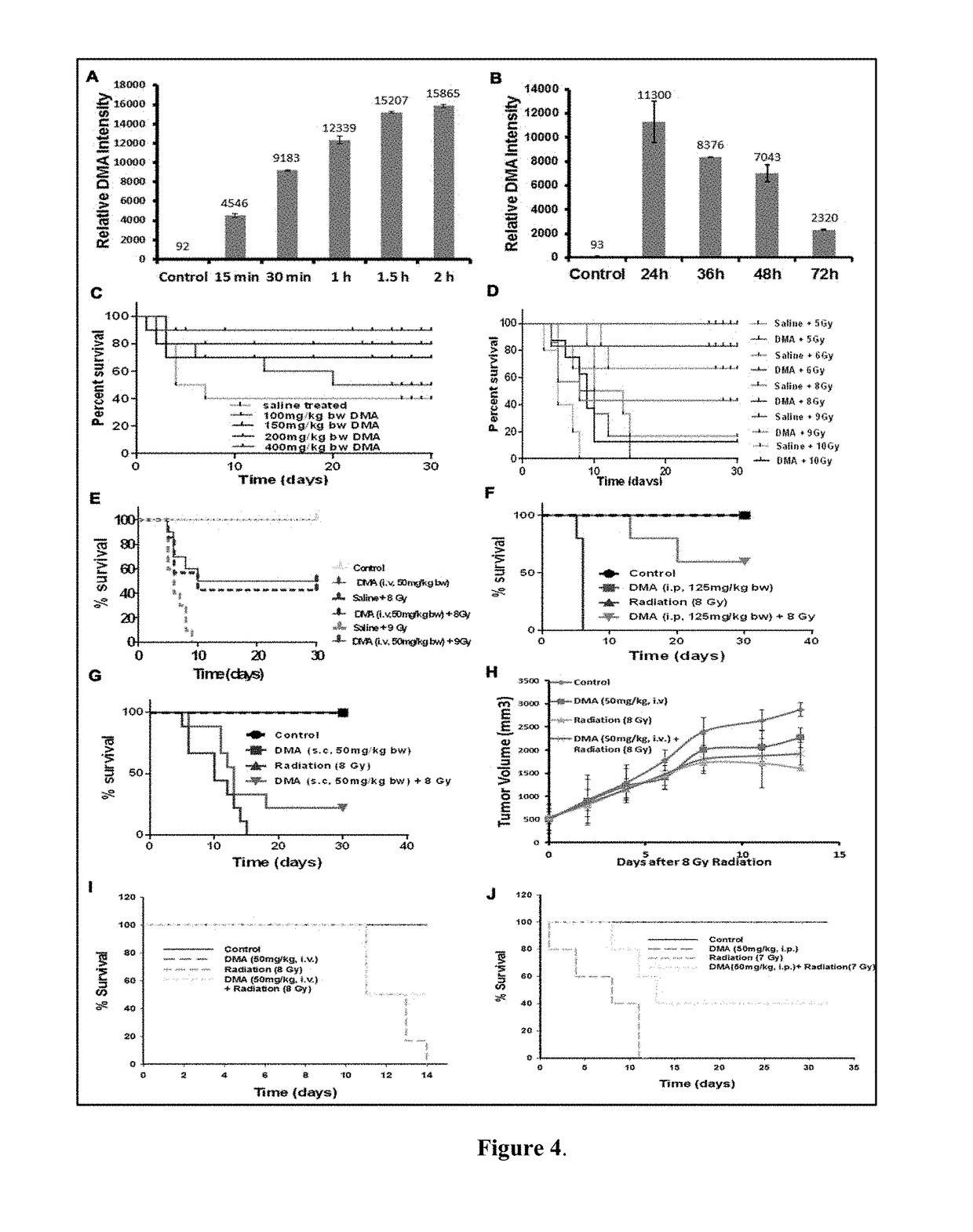Dma, a bis-benzimidazole, confers radioprotection to the intestine via akt/nfkb dual pathway activation
a bis-benzimidazole and dual pathway technology, applied in the field of dual activation of the akt/nfb pathway, can solve the problems of generating reactive oxygen species (ros), causing cell death, and limiting the administration route of radioprotectors, and causing toxicity
- Summary
- Abstract
- Description
- Claims
- Application Information
AI Technical Summary
Benefits of technology
Problems solved by technology
Method used
Image
Examples
example 1
Study Design
[0075]Animal studies were conducted according to guidelines of Committee for the purpose of control and supervision of experiments on animals (CPCSEA), Government of India and reported as per the ARRIVE (Animal Research: Reporting In Vivo experiments) guidelines. Randomization of animals onto study was based on initial tumor volumes to ensure equal distribution across groups. A power analysis was performed to calculate group sizes to enable statistically robust detection of survival of animal in response to DMA against lethal TBI (10 / group), tumor growth inhibition (5 per group) or Pharmacokinetics and biodistribution endpoint (3 / group).
example 2
[0076]The Human Embryonic Kidney cell line (HEK293), human lung fibroblast (MRC-5), Human glioblastoma (U87) and human lung adenocarcinoma epithelial (A-549) cell lines were grown until; 80% confluent trypsinized and seeded in 90-mm petri dish 24 h before the experiment. Four groups, control (untreated), DMA treated, radiation, and DMA+radiation-treated were studied in all three cell lines.
example 3
[0077]Exponentially growing HEK293, MRC5 and A549 cells were plated at cell densities 3000 cells per well in 96-well tissue culture plates. At 24, 48 and 72 h, cells were treated with increasing concentrations of DMA i.e.; 0.1-100 μM. Cytotoxicity was measured by MTT assay according to the manufacturer's instructions (Promega, Madison, Wis., USA).
Uptake and Efflux Study of DMA in HEK293 Cells
[0078]HEK293 cells (106 cells / ml) were seeded overnight and incubated at 37° C. in a complete medium. Cells were treated with prewarmed complete media to 37° C. containing DMA at 501 μM concentration for 2 h. After incubation time, cells were collected by centrifugation, resuspended in cold (4° C.) phosphate-buffered saline and placed on ice for subsequent flow cytometry analysis.
Clonogenicity of DMA in U87, HEK293, MRC5 and A549 Cells
[0079]Exponentially growing U87, HEK293, MRC5 and A549 cells were treated with 50 μM DMA for 2 h and irradiated with 0, 1, 2, 5, 8 and 10 Gy of r...
PUM
| Property | Measurement | Unit |
|---|---|---|
| concentration | aaaaa | aaaaa |
| concentration | aaaaa | aaaaa |
| half life | aaaaa | aaaaa |
Abstract
Description
Claims
Application Information
 Login to View More
Login to View More - R&D
- Intellectual Property
- Life Sciences
- Materials
- Tech Scout
- Unparalleled Data Quality
- Higher Quality Content
- 60% Fewer Hallucinations
Browse by: Latest US Patents, China's latest patents, Technical Efficacy Thesaurus, Application Domain, Technology Topic, Popular Technical Reports.
© 2025 PatSnap. All rights reserved.Legal|Privacy policy|Modern Slavery Act Transparency Statement|Sitemap|About US| Contact US: help@patsnap.com



